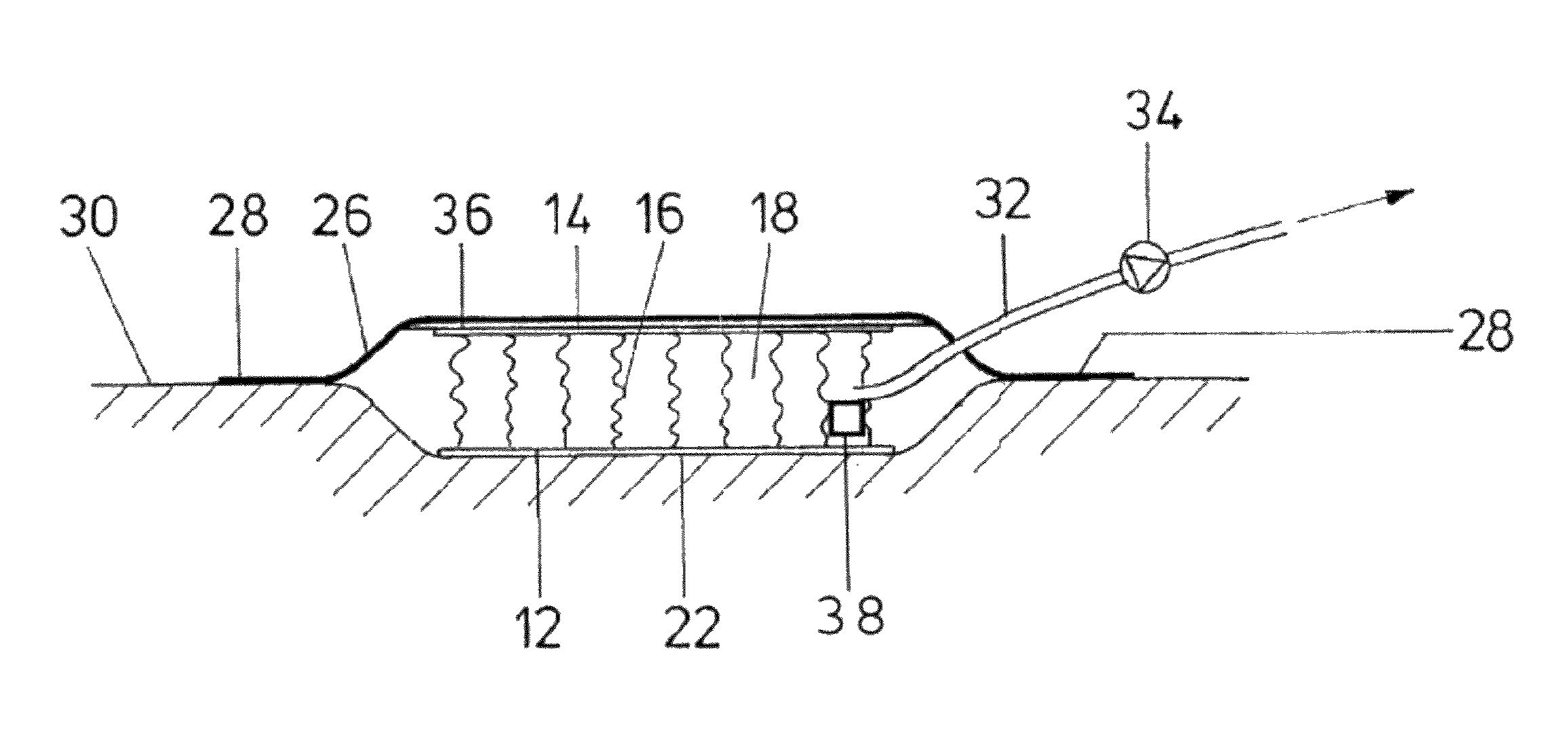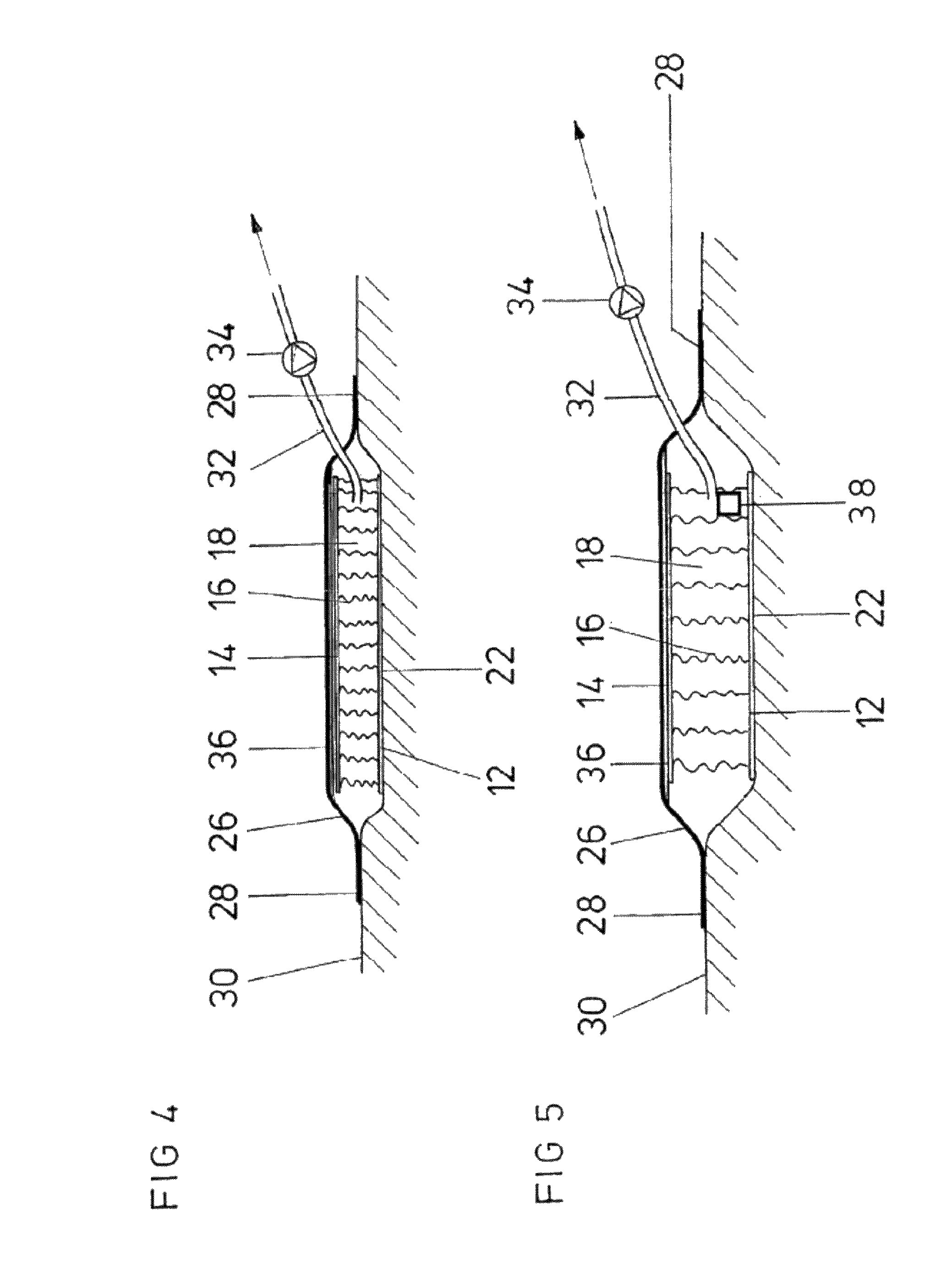Wound treatment device
a treatment device and wound technology, applied in the direction of knitting, catheters, ornamental textile articles, etc., can solve the problems of clogging, inserts need to be changed, and the effect of weakening the vacuum
- Summary
- Abstract
- Description
- Claims
- Application Information
AI Technical Summary
Benefits of technology
Problems solved by technology
Method used
Image
Examples
Embodiment Construction
[0034]According to the invention, wound insert 10, whose construction is schematically illustrated in one embodiment in FIG. 1, is used. Wound insert 10 consists of a planar textile spacer fabric, and is cut into adequate size according to the respective demands of the wound that is to be treated. Should the demand arise, the wound insert can also be available in given standard dimensions. The textile spacer fabric exhibits a first surface layer 12 and a second surface layer 14. Surface layer 12 and surface layer 14 are held apart by elastic cushioning spacer filaments 16. Thus, a relatively large interspace 18 is formed between surface layer 12 and surface layer 14. In this interspace 18 are found spacer filaments 16, which exhibit a relatively large mutual separation, so that the interspace 18 in the plane of the wound insert 10 is substantially open and exhibits between the spacer filaments 16 a large free flow-through cross section. Surface layers 12 and 14 can be pressed agains...
PUM
 Login to View More
Login to View More Abstract
Description
Claims
Application Information
 Login to View More
Login to View More - R&D
- Intellectual Property
- Life Sciences
- Materials
- Tech Scout
- Unparalleled Data Quality
- Higher Quality Content
- 60% Fewer Hallucinations
Browse by: Latest US Patents, China's latest patents, Technical Efficacy Thesaurus, Application Domain, Technology Topic, Popular Technical Reports.
© 2025 PatSnap. All rights reserved.Legal|Privacy policy|Modern Slavery Act Transparency Statement|Sitemap|About US| Contact US: help@patsnap.com



